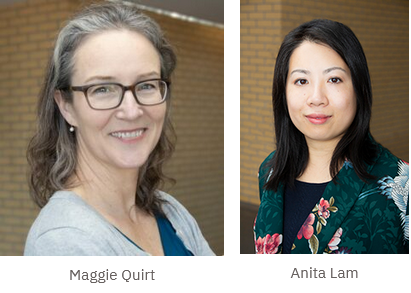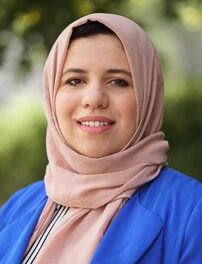After launching a new 6.0 credit placement course for Human Rights & Equity Studies (HREQ) students, Maggie Quirt can attest to the effort required to create a work-integrated learning (WIL) opportunity.

"This course benefitted significantly from the expertise of the LA&PS Learning Design Lab (LDL)," said Quirt, who was an associate professor in the Department of Equity Studies during the course development phase. "As an instructor, I needed ideas and tips for how to teach a bit differently."
The Learning Design Lab (LDL) is an initiative designed by the LA&PS Teaching and Learning team, under the guidance of Anita Lam, associate dean, teaching and learning, to support and advance teaching and learning in LA&PS. Collaborating with the LA&PS Office of Experiential Education, the first iteration of the LDL workshop series focused on exploring strategies, tools and best practices for incorporating work-integrated learning in different teaching contexts.
By bringing community partners into conversations about course activities or assessments, instructors and teaching assistants can help students build stronger connections to various partners and communities, as well as strengthen student engagement with course material.
"We've always had a very large faculty group in LA&PS that is interested in experiential education, everything from guest speakers to field trips," said Irene Seo, experiential education co-ordinator. "We decided to reach out to interested faculty and provide this as an additional resource to explore the strategies, tools and best practices for incorporating another type of EE: work-integrated learning.
"We wanted to walk through the entire process, supporting practical skills with pedagogy and research, so combining EE and T&L resources was very helpful."

Sarah Debbek
Sarah Debbek, an instructional designer with the T&L team, added, "It was an amazing opportunity to learn what each of our teams is doing and see how our work ties together."
Approximately 70 faculty altogether attended the workshop series. Many were new to WIL, while others were seeking to improve their skills. The four-session workshop featured four aspects of WIL:
- Design: tools to elevate student engagement;
- Facilitation: how to identify partners;
- Delivery: how to prepare students and partners; and
- Assessment: framework for assessments.
The EE team focuses on the structure of placements and works closely with faculty to oversee the WIL agreements once their WIL courses launch, to ensure student safety while on the job. However, Seo notes that many of the faculty hold the keys to finding placements for their students, since they have existing relationships in the field that they have developed over time.
Quirt created her WIL course while on sabbatical, giving her the necessary time to identify potential partners.
"I began with my own contacts and followed leads from other professors, but there was a certain amount of cold calling," she said. "Some connections for the placements were obvious, like Human Rights Commissions and the Canadian Museum of Human Rights. For equity studies, it wasn't always as clear cut, but lots of equity, diversity and inclusion work is being done by local libraries and anti-racism organizations.
"Two of my students are working with Parents Against Racism Simcoe County (PARSC), a volunteer group of parents who intervene to educate school administrators about the consequences of racist behaviour in general and anti-Black racism in particular."
This story was originally featured in YFile, York University's community newsletter.












